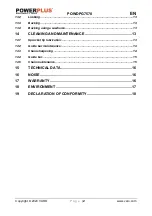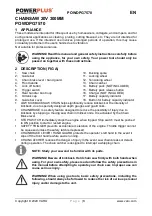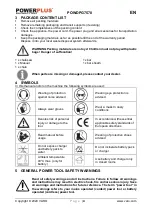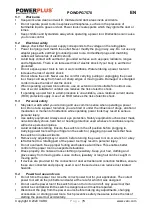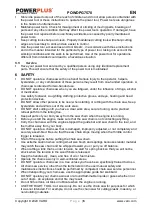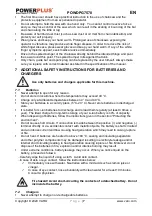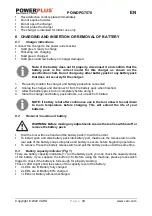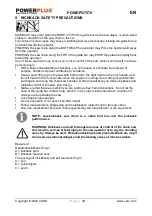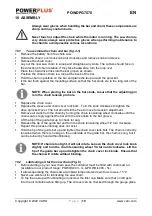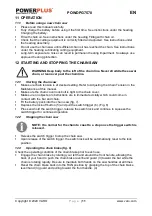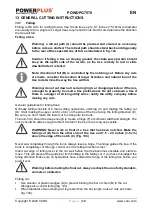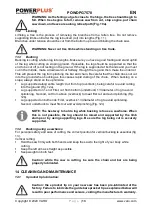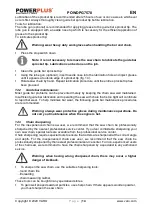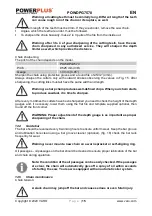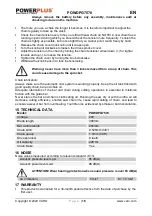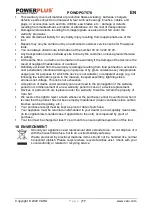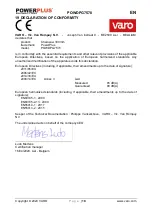
POWDPG7570
EN
Copyright © 2020 VARO
P a g e
|
9
www.varo.com
9 KICKBACK SAFETY PRECAUTIONS
KICKBACK may occur when the NOSE or TIP of the guide bar touches an object, or when wood
closes in and pinches the saw chain in the cut.
Tip contact in some cases may cause a lightning-fast reverse reaction, kicking the guide bar up
and back toward the operator.
PINCHING the saw chain along the BOTTOM of the guide bar may PULL the saw forward away
from the operator.
PINCHING the saw chain along the TOP of the guide bar may PUSH the guide bar rapidly back
toward the operator.
Any of these reactions may cause you to lose control of the saw, which could result in serious
personal injury.
▪
With a basic understanding of kickback, you can reduce or eliminate the element of
surprise. Sudden surprise contributes to accidents.
▪
Keep a good firm grip on the saw with both hands, the right hand on the rear handle, and
the left hand on the front handle, when the engine is running. Use a firm grip with thumbs
and fingers encircling the chain saw handles. A firm grip will help you reduce kickback and
maintain co
ntrol of the saw. Don’t let go.
▪
Make sure that the area in which you are cutting is free from obstructions. Do not let the
nose of the guide bar contact a log, branch, or any other obstruction which could be hit
while you are operating the saw.
▪
Cut at high engine speeds.
▪
Do not overreach or cut above shoulder height.
▪
Follow manufacturer’s sharpening and maintenance instructions for the saw chain.
▪
Only use replacement bars and chains specified by the manufacturer or the equivalent.
NOTE: Low-kickback saw chain is a chain that has met the kickback
performance.
WARNING: Kickback can lead to dangerous loss of control of the chain saw
and result in serious or fatal injury to the saw operator or to anyone standing
close by. Always be alert. Rotational kickback and pinch-kickback are major
chain saw operational dangers and the leading cause of most accidents.
Beware of:
Rotational kickback (Fig 2)
A = kickback path
B = kickback reaction zone
The push (pinch kickback) and pull reactions (Fig 3)
A = pull
B = solid objects
C = push


